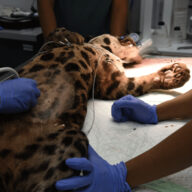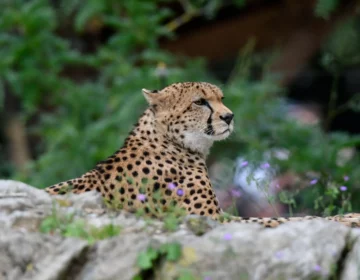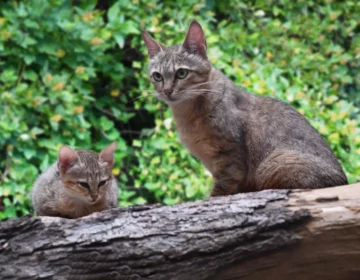
The sand cat
Felis margarita
The sand cat
APPEARANCE
The sand cat is the second smallest of the genus Felis, after the black-footed cat (Felis nigripes). The coloration of the sand cat is pale – typical of a species living in sandy areas. Its back is delicately striped, and the sides are silvery in color. Some individuals have dark horizontal stripes on their legs. The tail of the desert cat is long with 2-8 black rings and a black tip. The belly, throat, and cheeks are white. On the head, there is a reddish stripe running from the outer corner of the eye through the cheek. It has large eyes colored from amber through green to bluish. The ears of the sand cat are very big, with black tips, set wide and low on the sides of the wide and flattened head. The sand cat does not completely retract its claws when walking.
DISTRIBUTION AND HABITAT
The distribution of the sand cat is patchy. In northern Africa, it occurs marginally in the Western Sahara and has been recorded in Algeria, the Grand Occidental, the Béni Abbès region, and the Tindouf region. It is also irregularly distributed in the Arabian Peninsula and occurs from Iran to Kazakhstan.
The sand cat is the only feline found mainly in true deserts. It prefers areas of sparse vegetation with an admixture of sandy and rocky areas.
BEHAVIOUR
The sand cat is a solitary predator. Males and females usually meet only during the mating season. The sand cat is active mainly at night, hunting only at night.
FOOD
The sand cat feeds mainly on small rodents living in the sand, birds, young hares, reptiles and insects.
INTERESTING FACT
Sand cats are known as snake hunters – they prey on two species of vipers, hitting them hard on the head and then biting through the neck to kill them. When there is excess meat from larger prey, the sand cat hides it under an insulating layer of sand for later consumption.
MAIN THREATS
The main threat is habitat loss and degradation, which can lead to population fragmentation. An additional threat is the introduction of feral and domestic cats. They directly compete with the sand cat for prey and can transmit diseases.





